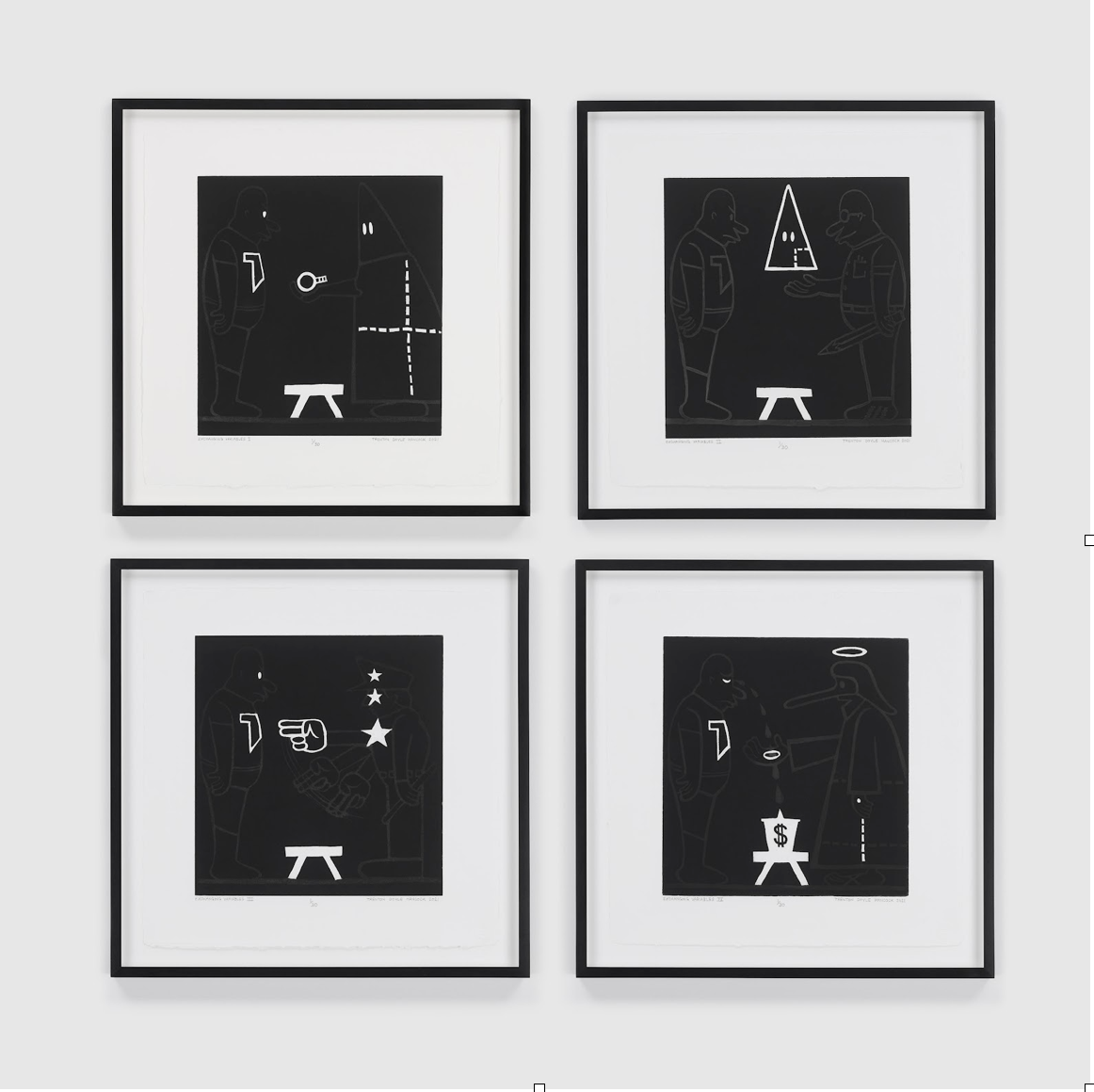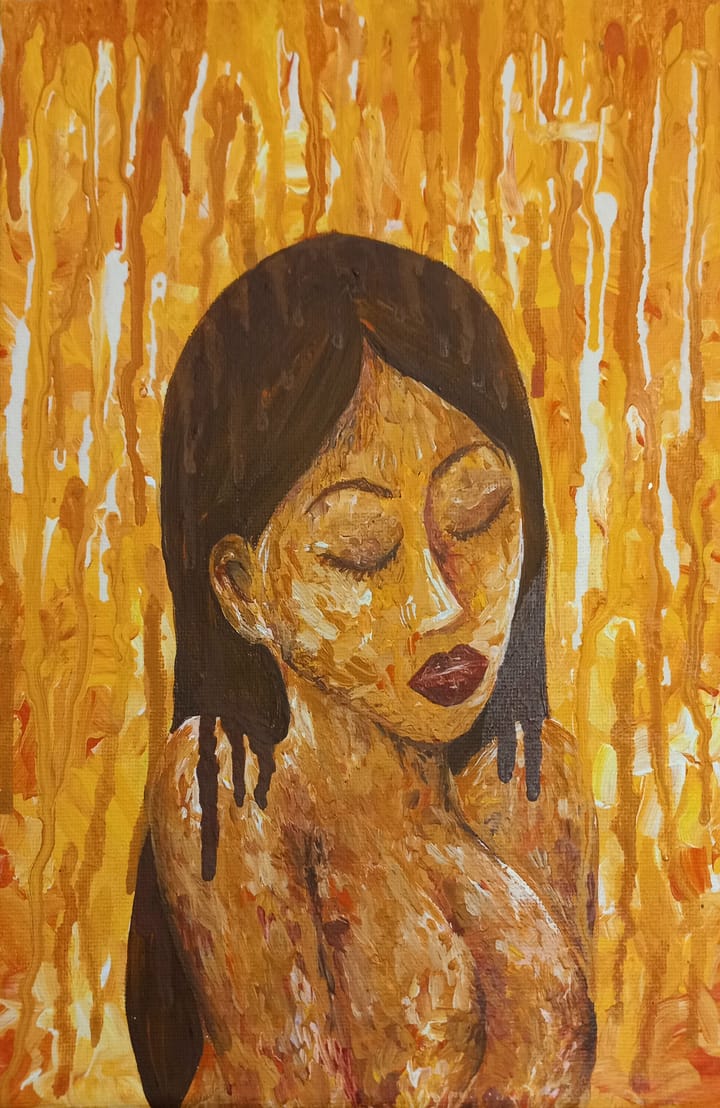“Collecting 101”: The Art of Acquiring Art
“Collecting 101: Acquiring Art for the Mead” is an internship that helps select new pieces for the Mead Museum while studying the art of curation. Cassidy Duncan ’25 reflects on her experience with visiting art studios and presenting potential pieces for the Mead to the Amherst community.


“Collecting 101: Acquiring Art for the Mead” is an internship created by Nichols Clark to honor his late wife, Trinkett Clark, Mead curator of American art. He has generously funded this program for over a decade, covering the costs to purchase and ship the artwork. This internship is typically run by the curators and educators at the Mead for Five College students who want to work together to acquire artwork through a collaborative cohort-based experience. Due to Covid-related complications in 2020, “Collecting 101” was postponed.
In the Spring 2022 semester, the Mead Museum and Amherst Athletics conducted a restructuring of “Collecting 101” which I was a part of. With the help of Billy McBride, associate athletic director of diversity and inclusion, the Mead partnered with Amherst Athletics to further include student athletes in the artwork-acquisition process.
In seven meetings between the months of January and March, students learned the core principles of artwork acquisition and researched artists’ processes to help curate new artwork for the Mead’s collection. Students’ work culminated in a trip to New York City to tour artists’ studios, visit galleries and museums, and participate in a public presentation where attendees voted on which single piece of artwork they believed should be purchased for the Mead.
Students decided to investigate several artists: Glendalys Medina, Trenton Doyle Hancock, and Tomashi Jackson. These artists collectively exuberate originality and power.
Glendalys Medina’s “Gratitude” series is the product of a gratitude exercise Medina practiced during quarantine, where she would go outside and find a color that moved her, then sketch it down. Her use of geometric forms and distinct color language creates beautiful, satisfying pieces.
Trenton Doyle Hancock creates eccentric, thought-provoking works that tell stories by engaging viewers with his own world. His piece in the collection is “Exchanging Variables,” a series of four aquatints that show his character “Torpedo Boy” — a superhero alter ego he created — meeting a policeman, a KKK Klansmen, Jesus, and himself.
Tomashi Jackson takes a contemporary take of screenprint on paper to tell the story of Mary Joseph Lyons, an abolitionist who used her home in Seneca Village to host runaway slaves who had escaped along the Underground Railroad. Seneca Village, one of New York’s first free Black communities, was later uprooted for the construction of Central Park. Jackson constructs a portrait of Mary Joseph Lyons in a bright neon orange color. This contrasts with how often historical images are presented in black and white, creating the illusion that the subjects they depicted are far in the past, even though they are not.
As a participant in “Collecting 101,” I can say that the climax of the internship was our trip to New York City. We underwent a unique experience within the art world through our intimate touring of galleries that housed our perspective artists’ work — the James Cohan Gallery, the Hunter College Art Galleries, the Black Index Exhibition, and the Jack Tilton Gallery — as well as the opportunity to speak with Tomashi Jackson over Zoom and tour Glendalys Medina’s studio. We also visited the Whitney Museum of American Art, which exposed us to the real life art collection market, an industry that sparked the interest of myself and other interns. The cohort had a few prospective art majors, but it was also filled with people from many different interests and pursuits, all of which aided in growing our combined perspective on the art that we considered and enriched our appreciation for the artists we had the pleasure to meet.
Our work throughout “Collecting 101” led to a final presentation in the Alumni Gymnasium, in front of staff and part of both the athletic and broader college community to celebrate the artwork that the program worked to bring to Amherst. The cohort split into two groups, one presenting on Tomashi Jackson’s “Mrs. Mary Joseph Lyons” and the other on Trenton Doyle Hancock’s “Exchanging Variables.” Following the presentations was a vote to decide Mead’s newly acquired piece — which the attendees of the event decided would be “Exchanging Variables.”
I am grateful for Mead’s collaboration with the athletic department to provide student athletes with a unique opportunity to connect to the art world and engage in its innerworkings. It was a tremendously impactful and memorable experience, thanks to the work of Billy McBride, Miloslava Hruba, Emily Potter-Ndiaye, and Lisa Crossman.
Correction, April 29, 2022: A previous version of this article mischaracterized the acquisition of "Exchanging Variables" as a vote by the committee, rather than by the attendees of the final presentation.





Comments ()